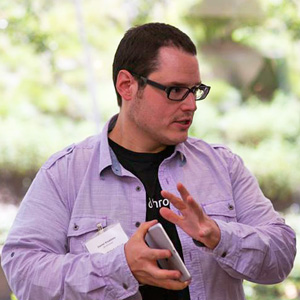Apr 3
2014
Mobile Healthcare Trends: Daniel Kivatinos, Co-founder, drchrono Offers His Perspective

Mobile healthcare trends, they’re only going to get more prevalent. That said, drchrono provides its official take on the top six mobile healthcare trends that are on the minds of physicians, business leaders and patients.
Daniel Kivatinos, COO and Co-founder, drchrono throws his hat in the ring and takes a look at some noteworthy mobile healthcare trends and issues that will be headlines this year.
Consumer Accountable Care – Today’s mobile devices allow consumers to become more accountable for their care. As high deductible healthcare plans become more popular, consumers are empowered now more than ever with access to reviews of physicians and can also track comparison of prices for healthcare procedures. Education about how to manage their own health is now easier, so patients are savvier and more informed with access to more apps and websites.
Here are a few examples of some popular tools and apps that consumers are using to be more responsible and own their health:
- Jawbone Up, fitbit, Misfit’s Shine, Basis Watch, iHealth blood pressure cuff and glucose meters. Also, Castlight Health, a healthcare price comparison tool.
Less is Now More – As physicians get paid less, physicians are finding tools to do more with less. For example, with just an iPad a physician can run its practice, accessing and managing patient data. According to a recent article in The USA Today, as the demand for healthcare goes up and as a shortage of 45,000 primary care physicians is predicted by 2020, more non-physicians are doing some of the work, such as nurse practitioners, pharmacists and physician assistants. Quality metrics software pushed through EHRs can also simplify digital health and assist with reimbursements, as well as quality and efficiency standards.
There is so much data coming at physicians on paper, they generally skim a medical record, sometimes missing key information. Organizing all of the data in a digital format flagging the most critical, relevant data pertaining to a patient is a key time saver. The reality of the situation is that with paper medical records this workflow isn’t possible.
Better Connections – As healthcare companies collaborate more, healthcare connections via Application Programming Interfaces (APIs) will allow more diversification from where the data is coming from, with more healthcare moving to the cloud. We will see new trends and insights from this combination of data that were not possible before. For example, epidemics, pandemics, genetics, drug and health trends can be tracked and reviewed in real time.
Older non-cloud based architectures shield data into silos and over the next several years we will see less and less non-cloud based infrastructures. One of the primary ways medical data is still being moved today is via the fax machine, which is archaic and hard to manage. Smartphones and tablets like the iPad and iPhone are becoming more powerful as a business tool, with more health apps managed from devices in the medical facilities. We predict more and more patients will track their personal health data through smartphones over the next year.
Data, Data and More Data – As more data is moved to the cloud, an improvement in decision-making will have to happen. Here are a couple instances where more streamlined data can really make a difference:
- Clinical trials – Right now, clinical trial researchers are hard pressed to find good qualified candidates, but as more data is available, clinical trial drug companies and patients will be able to connect faster then ever before.
- Real-time dynamic decision insights – Having massive amounts of data reviewed by super computers to see new insights is a reality and this will help in dynamic medical settings for improved decision-making. One example of this is the IBM Watson super computer, which has an API and is said to be able to diagnose at the level of a second or third year medical student, so that healthcare companies and institutions can leverage the data to get a broader picture of a patient.
Moving to Meaningful Use Stage 2 – The medical community is transitioning to Stage 2 and mobile EHR providers are making sure that their platforms for the iPad, iPhone and cloud are updated and ready to take advantage of the new government standards that go into effect on October 1, 2014. Stage 2 includes advanced clinical processes and interoperability standards allowing for a more consistent flow of data between health plans, patients and providers. Consistent data will allow for a smooth transition of care, more continuous care, less unnecessary repetition for the patients and using technology to remedy issues in our healthcare industry. It’s important for the medical community to work with a trusted EHR provider that will offer a seamless transition to the next phase.
Meaningful use Stage 2 is all about doctors and patients being able to communicate better, this is something that is much needed to streamline process and improve inefficiencies in the medical industry.
Genomics – This is a promising new field of digital health technology and many new apps are being developed to cover this area. Genomics offers better preventative tests to predict and personalize a person’s healthcare. For example:
- Personalized medicine – As we begin to understand more about genomics of each individual person, medicine can become more personalized based on that one person. This also includes learning about new cybernetics, such as regenerative medicine for artificial organs.
- Predictive diagnostics – Genomics will allow us to be more aware of things we are more susceptible too and how to create preventative care plans.